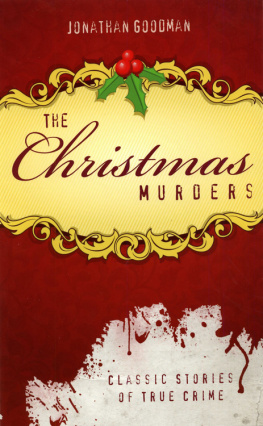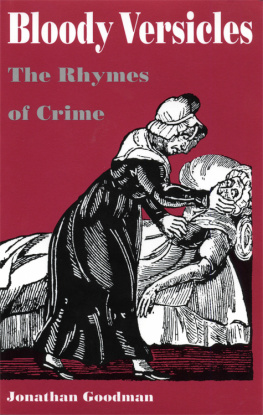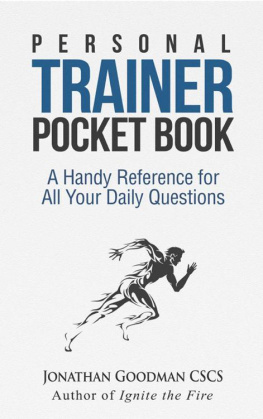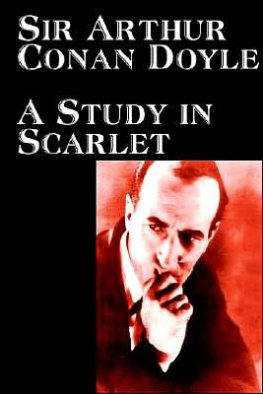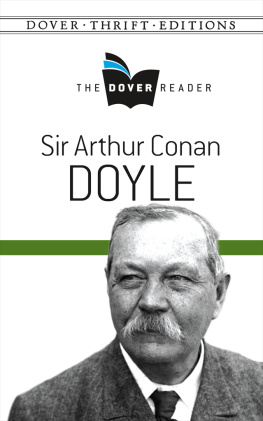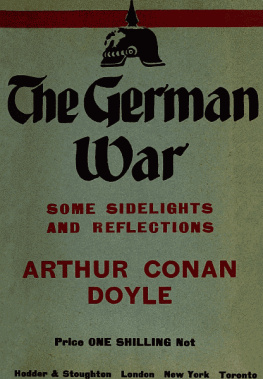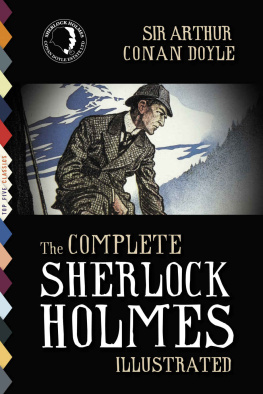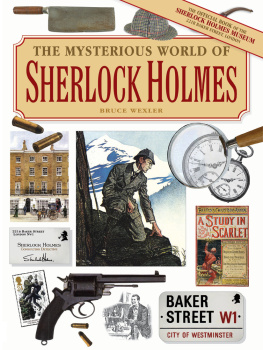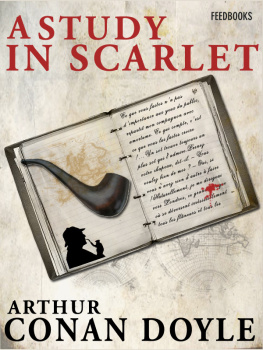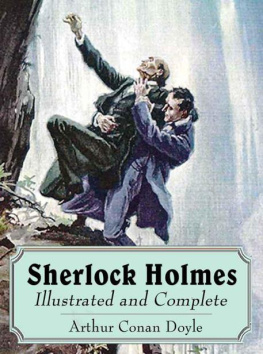THE CHRISTMAS MURDERS
Classic True Crime Stories
Edited by Jonathan Goodman
The Kent State University Press
Kent, Ohio
For Thomas M. McDade,
President of
The Society of Connoisseurs in Murder
2011 by the Estate of Jonathan Goodman
All rights reserved
First published in 1986 by Allison & Busby Ltd., London
Library of Congress Catalog Card Number 2011003219
ISBN 978-1-60635-082-9
Manufactured in the United States of America
Library of Congress Cataloging-in-Publication Data
The Christmas murders : classic true crime stories / edited by Jonathan Goodman.
p. cm. (True crime history series)
Originally published: London ; New York : Allison & Busby, 1986.
ISBN 978-1-60635-082-9 (pbk. : alk. paper) 1. MurderHistory19th centuryCase studies. 2. MurderHistory20th century
Case studies. I. Goodman, Jonathan.
HV6513.C48 2011
364.152'309034dc22
2011003219
British Library Cataloging-in-Publication data are available.
15 14 13 12 11 5 4 3 2 1
J ONATHAN G OODMAN , my dear friend and literary colleague for more than a quarter of a century, passed away on January 10, 2008. We knew each others literary work before we met for the first time in London, introduced by another English crime historian whom we both admired, Richard Whittington-Egan. My wife Helen and I quickly formed a strong attachment to Jonathan. After our first meeting we saw him at least once a year until 1995, most often in England, but frequently in America (which he adored) and once in Paris (only after we swore to protect him from his cross-Channel neighbors).
Many years ago Jonathan Goodman was recognized by Jacques Barzun as the greatest living master of true-crime literature; the high regard for his accomplishments continues after his untimely death. At first it appeared that Jonathan was destined for a career in the theater. After National Service in the Royal Air Force, he became first a stage manager and then a director, working in the West End, on touring productions, and in repertory companies. These years gave Jonathan an endearing dramatic flair that he never lost.
During his tenure at the Liverpool Playhouse, he became interested in Liverpools puzzling Wallace murder case, for which he propounded a convincing solution in his successful debut as a true crime writer (The Killing of Julia Wallace). He went on to publish forty books, usually in the true crime genre but also novels and poetry; works of his have been translated into French, German, and Japanese. Jonathan won all the honors that his literary field could offer, including the Gold Dagger of the United Kingdoms Crime Writers Association.
One of Jonathans specialties was the editing of thematically devised true crime anthologies. In his memory the Kent State University Press, a longtime publisher of his work, is issuing two of his anthologies not previously released in the United States. The present collection, The Christmas Murders, focuses on murders committed, as Jonathan tells us in his introduction, during the festive seasons encompassing Christmas, each dating uncertainly from when greetings cards start arriving till Twelfth Night.
Richard Whittington-Egan, a gifted crime historian and chronicler of his native Liverpool, is irresistibly drawn to a play on words. He hopes that his readers will assume that his title The Christmas Sack Murder will refer to Santa Clauss bundle of gifts or to a certain, and delectable, variety of sherry. In fact, what the author has on his mind is something quite gruesome, the sack in which, on December 10, 1913, George Ball (alias Sumner) and Samuel Angeles Elltoft carted the murdered and trussed Christina Catherine Bradfield for deposit in the Leeds & Liverpool Canal. In recounting this case, Whittington-Egan notes the prominent role played by chance.
The Ratcliffe Highway Horrors is Harold Furnisss gripping review of Londons first serial murders: the East End massacres of the Marr and Williamson households on the nights of December 7 and 19, 1811; these outrages were attributed to John Williams, a former seaman living in the vicinity. Furniss corrects some errors in Thomas De Quinceys classic account of the case in his Three Memorable Murders (1854), but supports De Quincey in giving all the credit, or discredit, to the diabolical Williams alone. There was no judicial determination of Williamss responsibility for the crimes, because he hanged himself in prison while the investigation was still incomplete. In 1971 P. D. James and police historian T. A. Critchley in The Maul and The Pear Tree: The Ratcliffe Highway Murders 1811 opined that John Williams was virtually condemned and his memory vilified on evidence so inadequate, circumstantial and irrelevant that no competent court of law would commit him for trial. I am inclined to believe that Jonathan Goodman, who generally opposed revisionist interpretation of murder cases, would have continued to believe in Williamss guilt.
Packaged Death, an article of mine that Jonathan Goodman chose for The Christmas Murders, discusses the two trials of Roland Molineux for the murder of Katherine Adams, who had ingested cyanide of mercury contained in a fake bottle of Bromo-Seltzer mailed to Mrs. Adamss nephew at a New York City athletic club on the day before Christmas 1898. This essay originally appeared as the cover story in a 1983 issue of

